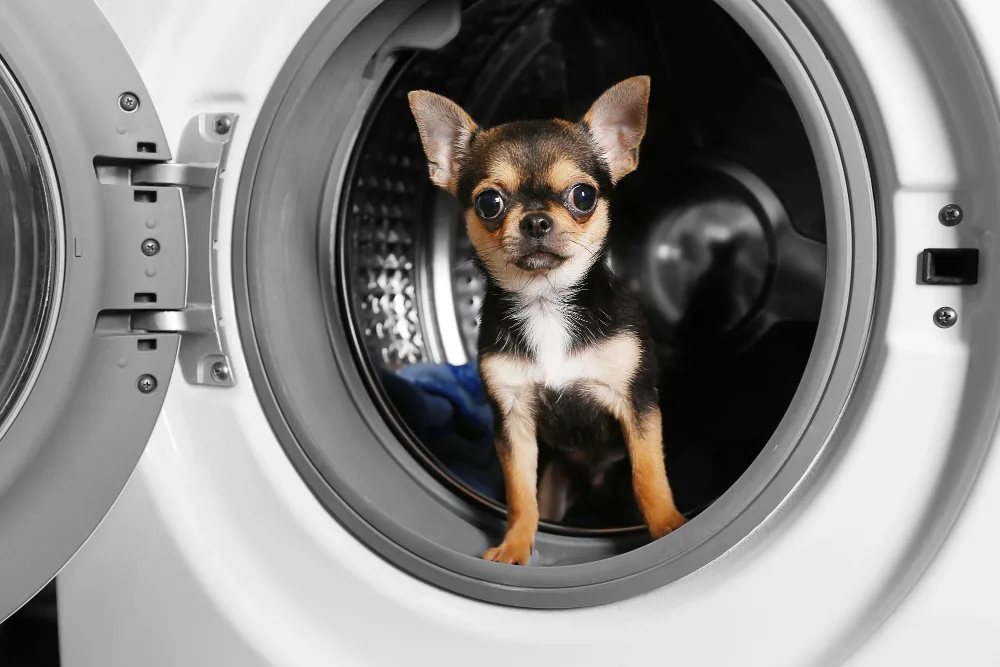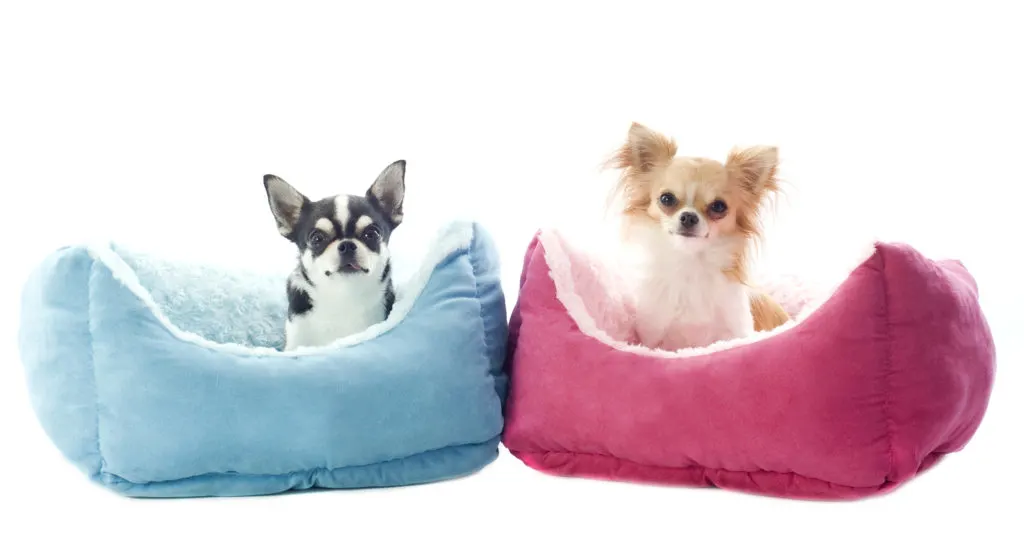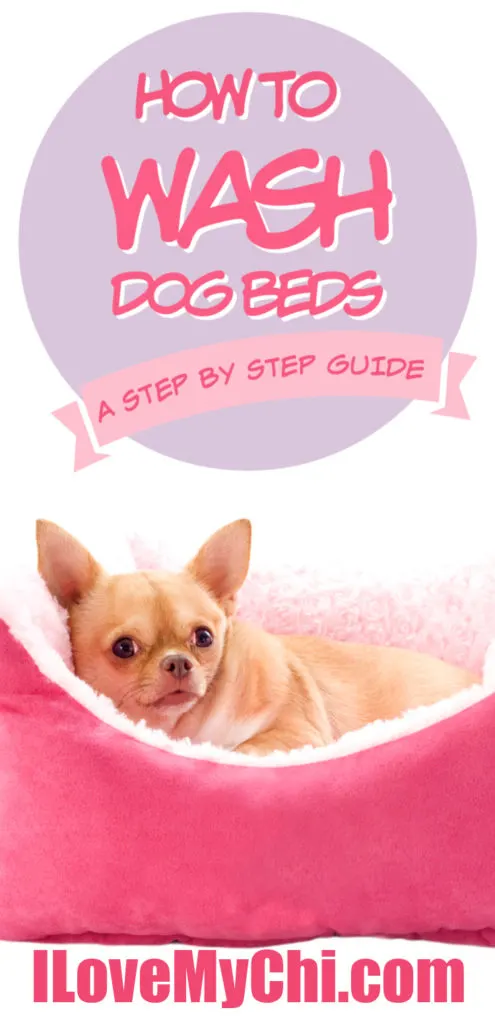When a dog is given a bed they really love, it will be used all the time! The great part about most dog beds compared to large human furniture is that they are much more simple to wash. However, washing the bed the right way impacts the longevity of the bed.
Let’s discuss how to properly wash a dog bed so that your dog will enjoy her favorite bed as long as possible!

How Often Should You Wash a Dog Bed?
Washing too frequently will cause wear and tear to occur on the bed, but washing minimally creates a stinky bed, which will contribute to a dog smelling less fresh. To determine how often to wash a dog bed, consider your dog’s lifestyle.
If you have a dog who spends most of their time indoors and goes for walks on sidewalks most of the time, their bed will not be as dirty as a dog who lives on a farm or goes into nature daily and gets covered in dirt and debris.
A dog who spends most of their time indoors would need their bed washed about every other month to once a month. A dog who spends significant time outdoors could need their bed washed weekly.
To help prevent washing too frequently, try to wash your dog’s bed on the same day that you bathe your dog. Dogs should not be bathed too frequently, so this is an effective strategy. Also, you do not want a freshly bathed dog laying on a dirty bed because it will undo all your hard work! A clean dog who lays on a dirty bed will not smell clean for very long, but a clean dog laying on a clean bed will smell fresher longer.

What Should I Use to Wash the Dog Bed?
Many exterior covers of dog beds may be washed in a washing machine. They may be washed with regular laundry detergent. Since many dogs have sensitive skin, consider using a detergent that is made for sensitive skin or a high-quality detergent to avoid your dog coming into contact with substances that could irritate their skin.
Keep in mind that most interior materials, such as foam, are not safe to machine wash and must be freshened simply with baking soda and sunshine (discussed further below). To make interior materials last as long as possible, be sure to invest in a waterproof cover to protect them.

Steps to Washing a Dog Bed
Follow these steps to wash your dog’s bed properly:
- Read the care instruction label. Your dog’s bed may have specific instructions and if you do not follow them correctly you risk ruining the bed.
- Washing the exterior. If the bed is one piece, it can be inserted directly into your washing machine in most cases. If your washing machine is not large enough to accommodate it, consider calling a local laundromat or dry cleaning service to see if they have a washing machine available for use.
- If the bed has a zip-off cover and an interior that cannot be washed, unzip the cover, set the interior aside, and insert the cover into the washing machine. Run the machine on a gentle setting and add the appropriate amount of detergent depending on the size of the bed.
- Wash the interior. If your dog’s bed has a waterproof cover on the lining of the bed, wash that with the cover if it can be machine washed as well. If you do not have a waterproof liner, I highly recommend obtaining one. They are available specifically for dog beds, or you may be able to utilize a waterproof liner for a human child’s crib.
Use extra care with the interior lining and materials! Not all of the interior materials may be machine washed. Depending on the material, washing it could cause it to become severely damaged. If the material is very thick, drying it could require significant time in the dryer, which can be damaging, or it can be nearly impossible.
In the event that it cannot be machine washed, you will need a sunny day, a clothesline, and baking soda.
Here is what to do:
- Take the lining outside and sprinkle it with baking soda, then rub the baking soda across the entire surface in little circles.
- Next, clip it onto the clothesline and let it breathe. Be sure to use as many clips as needed to support it without damaging it.
- If it is too heavy for a clothesline, use a railing or slated patio furniture to lay it across a surface which will allow it to breathe.
- A day outside to let the odors blow away has the potential to be very effective.
- The next day, take it down and pat it off to remove the excess baking soda, then zip it back into the waterproof lining.

Extremely epic messes
All dog parents will experience an extremely epic mess at some point. An upset tummy can wreak more havoc on a dog bed than you might be able to imagine.
In the event of the presence of bodily fluids, before you begin, take the bed outdoors to prevent creating more work for yourself. If you are washing the bed outdoors, you prevent cleaning your floors from being added to your to-do list for the day, as you could simply hose off your driveway instead. Also, the fresh air is helpful if you have a sensitive stomach.
Here is what to do:
- Begin by putting on gloves and removing any excess debris from the surface of the bed.
- Take any large pieces off and place them in a grocery or trash bag.
- Next, take a moist paper towel and wipe off any thick residue that remains.
- Then prepare warm water and thoroughly saturate the area, then generously cover with baking soda.
- Allow the water and baking soda to sit for approximately 20 minutes, then generously pour lemon juice over the area.
- You may gently work difficult spots off when rinsing with lemon juice, but do not scrub too hard or you may damage the bed.
- After that, wash the bed in the washing machine as you normally would. If the bed is not machine washable, fill a bathtub with warm water and laundry detergent and allow it to sit for a half-hour, then wash as you normally would.
If there is no way to properly clean the epic mess, do not feel guilty for throwing away the dog bed and buying a new one; it is unsanitary to continue using a bed that cannot be properly cleaned.

Reassembling the Dog Bed
It can be difficult to reassemble dog beds, so be sure to give yourself a few minutes to do it properly. For example, the foam may catch onto the cover and it will need to be readjusted several times. Be sure to assemble the bed as properly as possible to increase its longevity. If you put the bed back together improperly, as your dog uses it, it may cause the materials to experience extra wear and tear, decreasing the useful life of the bed.
How do I know when I need to replace my dog’s bed?
Consider the following when determining if a dog bed needs to be replaced:
- If the materials are fraying or becoming threadbare.
- If the bed is no longer smelling clean after it is washed.
- If your dog has chewed off pieces, leaving the interior materials exposed, and is interested in tearing out the interior materials next.
- If your dog’s bed was subject to vomit, diarrhea, or some other bodily fluid that cannot be completely cleaned off.
- If the bed is becoming flattened and cannot be fluffed up.
- If you cannot dry the interior materials, and they have become moldy and smelly.
Conclusion Washing your dog’s beds is an important aspect of their care. Ensuring that they have a clean and comfortable place to rest contributes to their health and their hygiene.



